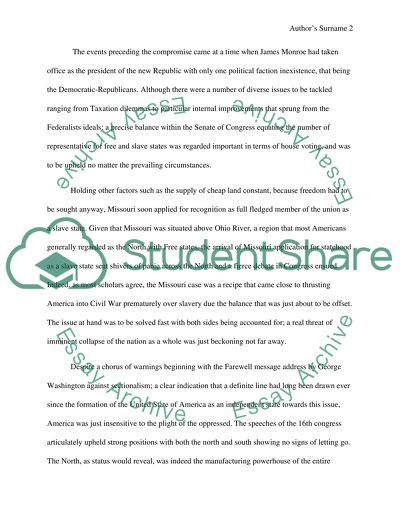Cite this document
(“Missouri Compromise Term Paper Example | Topics and Well Written Essays - 1750 words”, n.d.)
Missouri Compromise Term Paper Example | Topics and Well Written Essays - 1750 words. Retrieved from https://studentshare.org/history/1592327-missouri-compromise
Missouri Compromise Term Paper Example | Topics and Well Written Essays - 1750 words. Retrieved from https://studentshare.org/history/1592327-missouri-compromise
(Missouri Compromise Term Paper Example | Topics and Well Written Essays - 1750 Words)
Missouri Compromise Term Paper Example | Topics and Well Written Essays - 1750 Words. https://studentshare.org/history/1592327-missouri-compromise.
Missouri Compromise Term Paper Example | Topics and Well Written Essays - 1750 Words. https://studentshare.org/history/1592327-missouri-compromise.
“Missouri Compromise Term Paper Example | Topics and Well Written Essays - 1750 Words”, n.d. https://studentshare.org/history/1592327-missouri-compromise.


